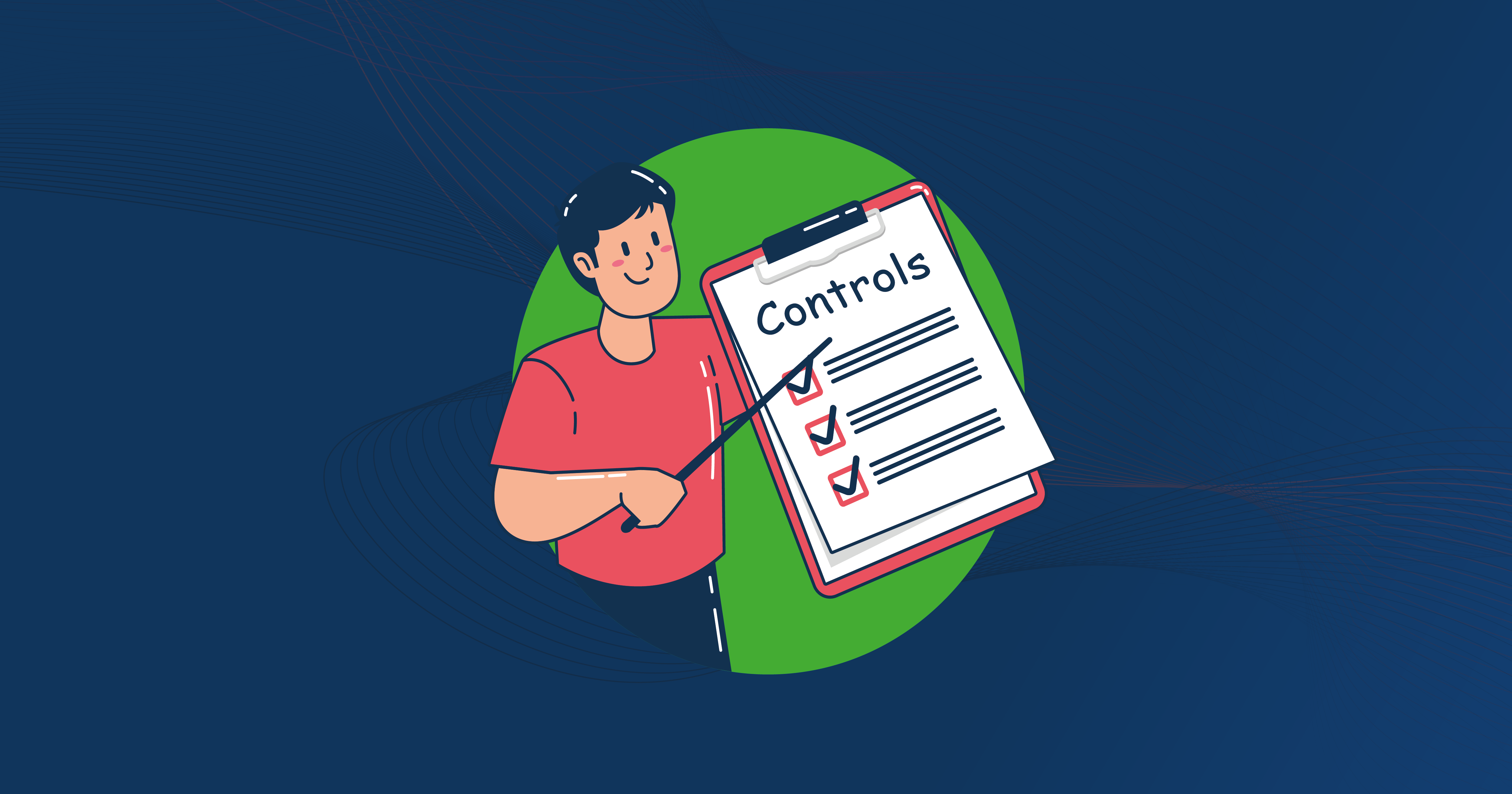The most common security framework policies, like HIPAA, PCI, NIST, etc., talk about vulnerability management controls, which are a set of recommended safeguards that help mitigate risks and prevent cyber-attacks in your network.
Vulnerability management software controls make up a significant part of critical security frameworks, and strict adherence and proper implementation of these controls can benefit both security and business.
Understanding different vulnerability management controls can provide key insights into critical security frameworks and can also help you properly plan your organization’s security, leading to a safer and more compliant organization.
Critical Vulnerability Management Controls
Security frameworks cover all the aspects of complete cybersecurity for a company to ensure the chances of risk of a breach. This includes both physical and virtual aspects of cybersecurity. Vulnerability management forms the major chunk of the virtual aspect, and its importance can’t be underlined enough.
All the top frameworks follow some fundamental steps or their variations: identify, detect, protect, and respond.
Top security frameworks like PCI, HIPAA, NIST, etc., cover different aspects of an organization’s well-structured vulnerability management platform. Therefore, Here are some critical vulnerability management controls you need to follow to become safer and compliant with these standards:
Asset management:
Complete security starts with complete visibility over all of your IT assets. Proper detection and inventorying of software and hardware IT assets is critical. Asset management also includes cataloging IT and shadow IT assets which are surging in popularity and usage.
Some policies, like NIST, also discuss prioritization and demarcation of IT assets based on their criticality and business value. This is especially beneficial for risk mitigation and efficiency.
It also talks about accurate documentation and maintenance of all the collected data.Vulnerability & Risk Assessment:
This control mainly discusses all security risks that can be exploited and lead to a cyber-attack. Here, vulnerabilities include CVEs and non-CVEs like misconfigurations, posture anomalies, open ports, etc. Therefore, Systematic arrangements are necessary to assess vulnerability by accurately detecting security risks through vulnerability scanners. Proper assessment of these risks can help make the risk mitigation process easier, reduce the attack surface, and improve the organization’s security posture.
Security Continuous Monitoring
Vulnerability management shouldn’t be sporadic, be it monthly or, even worse, yearly.However, Security frameworks suggest that the monitoring of IT assets must be continuous. Continuous scans should be performed to detect any cybersecurity event like new vulnerabilities, breaches, etc. Along with monitoring, event logs must be recorded, and network vulnerability must be properly documented and stored. Documentation helps understand and assess threats and mitigate security risks.
This also includes the physical security of devices that store sensitive data and more.
Vulnerability Remediation & Mitigation:
Detecting and documenting vulnerabilities isn’t enough. Vulnerability management, from scanning to remediation, should be a continuous process that repeatedly scans, detects, and remediates security risks.
Security frameworks mandate that it is key to remediate and mitigate vulnerabilities and security risks. Correct application of patches and remediation of misconfigurations and posture anomalies must be enforced.
Moreover, A systematic remediation process that efficiently prioritizes vulnerabilities based on risk and business value and remediates them to reduce attack surfaces and the chance of a cyberattack.
Here’s a table of top security frameworks and how they correlate and overlap with the top vulnerability management controls they recommend. Some features, functionalities, and requirements differ between the frameworks, but this table gives you an overview of what can be achieved with a solid vulnerability management program.
Critical Vulnerability Management Controls for Security Frameworks
| Vulnerability Management Controls | NIST Security Framework | HIPAA Security Framework |
|
Asset Management |
Asset Management |
Hardware & software inventory |
| Vulnerability & Risk Assessment |
Risk Assessment, Risk Management Strategy, Anomalies & Events |
Risk assessment and management, Access management |
|
Security Control Monitoring
|
Info Protection Process & Procedure, Security Continuous Monitoring |
Security management, Access management, Access and activity logging |
|
Vulnerability Remediation and Mitigation |
Analysis, Mitigation |
Risk assessment and management |
Effectively enforcing Vulnerability Management Controls through SanerNow AVM.
SanerNow is an advanced vulnerability management platform that can perform a multitude of functions for your IT network. It’s an all-in-one platform that can scan, detect, document, assess, prioritize, process, remediate and report vulnerabilities and security risks.
Closely synergizing with compliance, SanerNow can enforce critical vulnerability management controls through its integrated and automated platform. It also provides a granular level of control over each step of vulnerability management, leading to a completely customized and highest level of security and compliance control for your organization.
Out-of-the-box, SanerNow can help you become compliant with NIST, PCI, and HIPAA. But it also provides a customizable set of compliance controls that can be used to enforce compliance with any security framework.
Vulnerability Management Tool is a fundamental requirement for all security frameworks. Therefore, SanerNow provides a head start and a building base from which you can start your journey toward a safer and more compliant organization.

